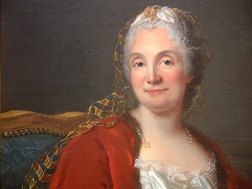
Women Artists: The Other Side of the Picture 1997
Distributed by Films Media Group, PO Box 2053, Princeton, New Jersey 08543-2053; 800-257-5126
Produced by the National Film Board of Canada, in association with the Canadian Broadcasting Association
Directed by Teresa MacInnes
VHS, color, 54 min.
High School - Adult
Art, Women's Studies
Date Entered: 11/09/2018
Reviewed by Joan Stahl, University of Maryland, College Park, MDVisit any museum in the world, with the exception of the National Museum of Women in the Arts (Washington, DC) and the great majority of the collection will be the work of male artists. Why are so few women artists represented? Are there no great women artists? Are there differences between the art that men and women create?
Women Artists: The Other Side of the Picture probes these and other questions, in conversations with curators, art historians, museum educators, art students, and artists. Susan Fisher Sterling, curator, National Museum of Women in the Arts, and Linda Nochlin, New York University art historian, provide historical information that documents the long-standing inequalities suffered by women artists. Most poignant are the personal histories that are recounted in the film. Nicholas Tuele, chief curator, Art Gallery of Victoria, describes the short, bright flash of Sophie Pemberton (1869-1959), Canada's first professional artist, who abandoned her promising career at the insistence of her husband. With a degree of amusement and resignation, Mary Pratt concedes the marginalization of her work based on its decidedly female point-of-view. Other artists who share similar life experiences include Doris McCarthy, Joyce Weiland, Landon Mackenzie, and Buseje Bailey.
The film cogently chronicles disparities, but also includes opposing visions. For artists Gathie Falk and Jane Ash Poitras, gender is not an issue, either in their work or their interactions with the art world. Kirk Varnedoe, curator, Museum of Modern Art, is cast as the stereotypical, white, male, organizational voice, defending the composition of the museum's collections as a reflection of historically determined factors, but acknowledging the benefits of continued dialogue that results from the challenges by the Guerilla Girls, critics of the art establishment.
The film also explores the issue of decision-makers. Specifically, who decides what gets into museums and galleries and who determines the relative value of art? Judy Chicago's "Dinner Party," a sculptural installation that symbolized the struggles and honored the triumphs of women throughout history, is presented as an illustrative case study. When it was shown in San Francisco in 12979, the work was hailed in the popular press and it drew huge crowds of museum-goers. But, in short order, the art press dismissed it as didactic and at least one Congressman labelled it "pornographic." Today it is acknowledged as an icon of the feminist movement, but it has yet to find a permanent museum or gallery home because so much controversy surrounds the work.
Attitudes and perceptions change slowly through education. Women Artists: The Other Side of the Picture is an excellent and appropriate educational tool that can be used to prompt considerable discussion in a high school or college classroom. The presentation is balanced, well-edited, of technically high quality, and informative. Purchase is recommended in public and school libraries.